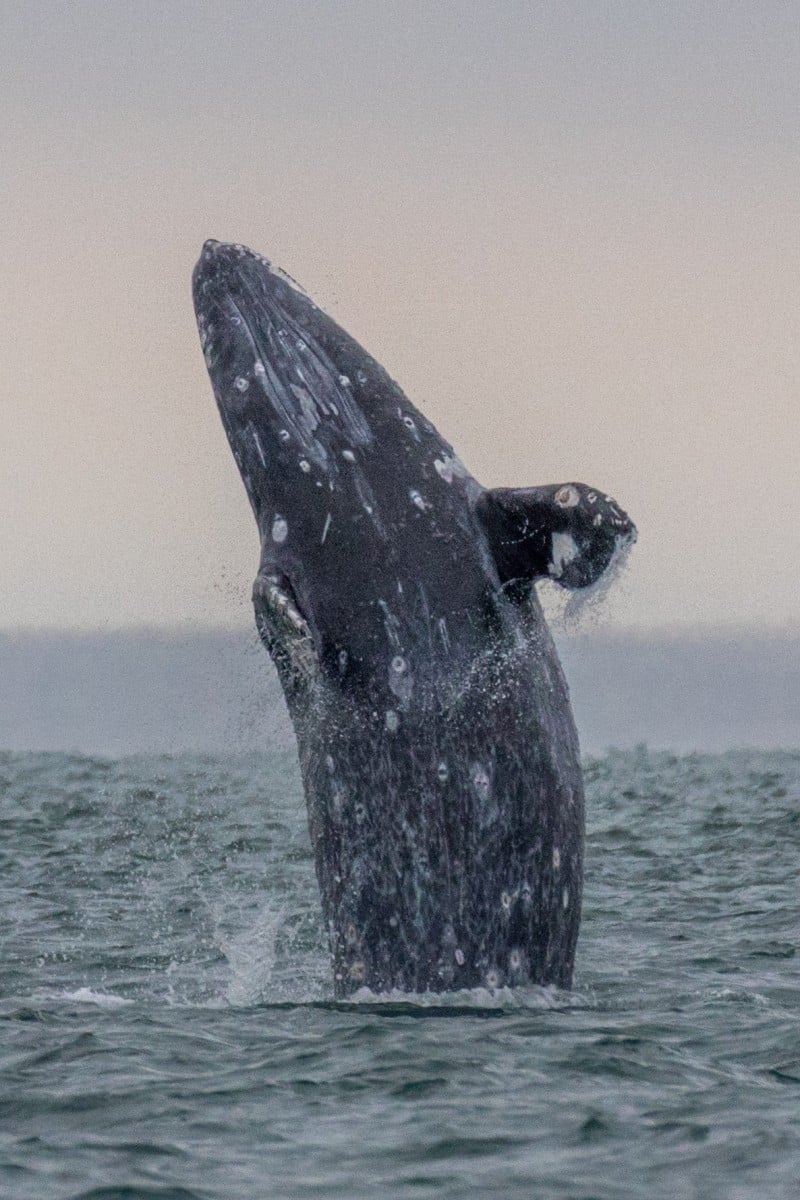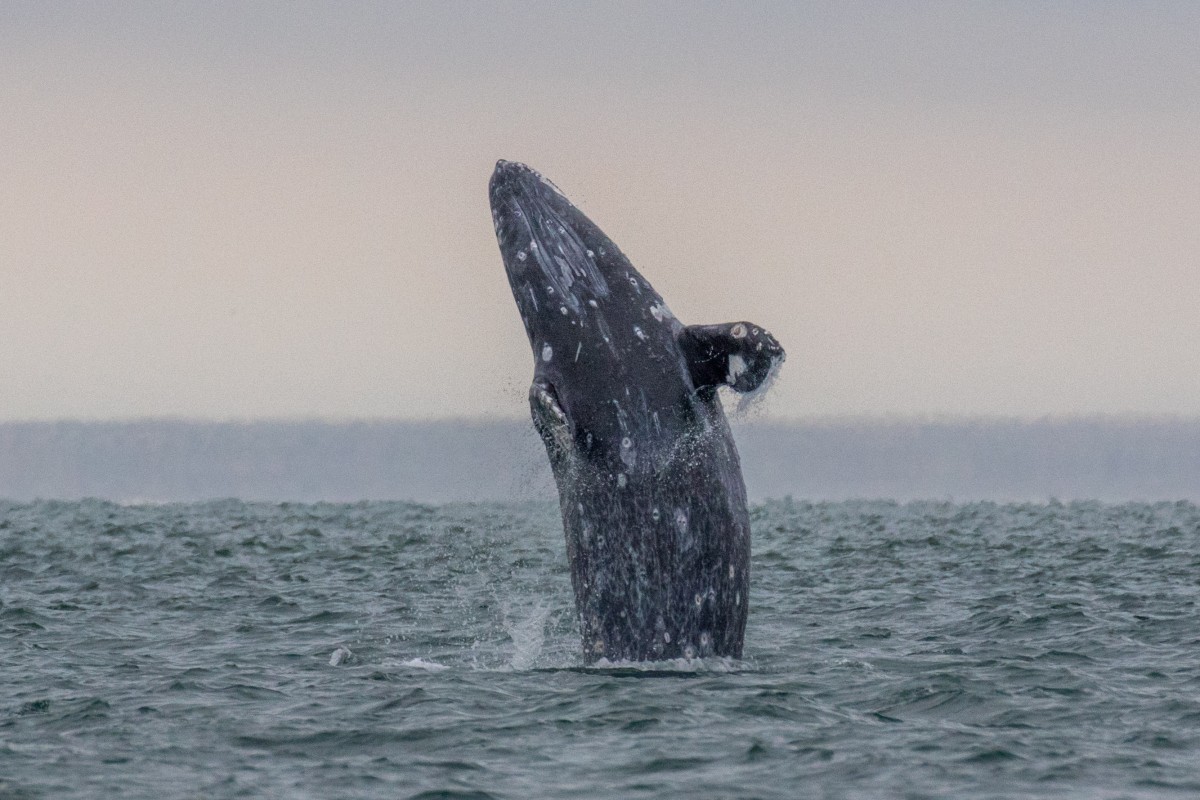
Hopeful signs for declining population of grey whales along US West Coast
- Numbers have been dropping since 2016, when researchers estimated nearly 27,000 whales; now, they believe the count to be around 14,500
- However, more whales have been spotted with babies, and the conditions of their bodies have improved - both positive developments
 Scientists estimate the grey whale population at around 14,526. Photo: Shutterstock
Scientists estimate the grey whale population at around 14,526. Photo: Shutterstock The grey whale population along the West Coast of the US showed another year of declines, according to the latest estimates, but scientists say there are some positive signs for the formerly endangered whales.
The population of the eastern north Pacific grey whale has been sliding downward since reaching a peak in 2016 with an estimated 26,960 whales. This year, scientists put the estimate at 14,526 whales. The estimate is based on counts of migrating whales off the Central California coast and statistical analyses.
In 2019, the National Oceanic and Atmospheric Administration (NOAA) declared a population die-off as an “unusual mortality event.” While the cause isn’t clear, researchers theorised the decline is partially related to changes to food sources in the Arctic, where the whales spend the summer.
Delighted onlookers spot whale in Hong Kong’s eastern waters
Three dead grey whales found along Washington shores last month showed signs of malnutrition, according to the Cascadia Research Collective.
There are signs of hope for the intrepid species, which migrates around 16,093km between the Arctic and Mexico. In winter, when the whales spend their time in lagoons, scientists counted more mothers with calves in 2023 than any of the past five years.
Researchers also observed that the conditions of their bodies have improved and that fewer dead grey whales have washed ashore in Mexico and along the West Coast since 2019.
All these signs lead researchers to believe “the grey whale mortality event may be slowing,” said Autonomous University of Baja California Sur professor Jorge Urbán Ramírez, who studies the species.
NOAA’s Marine Mammal and Turtle Division director David Weller said the administration will continue to keep a close eye on the whales. “We want to pick up on any signs or signals of a positive change in the concerning trend the population has undergone recently.”
The eastern north Pacific grey whale is considered a conservation success story because their population has grown consistently after they were protected under the Marine Mammal Protection Act in 1972. They neared extinction in the 1950s due to commercial hunting. In 1964, the species numbered 13,426.
Grey whales learn daring feeding strategy during epic Arctic migration
Researchers say a small group of grey whales that stops in Puget Sound on their annual migration, known as “the Sounders,” have been known to teach themselves how to feed on ghost shrimp burrowed in mud flats, often in shallow near-shore waters.
The eastern north Pacific grey whale was removed from the endangered species list in 1994. Since then, similarly large fluctuations in this whale population has occurred before and the species has recovered from a similarly small numbers.